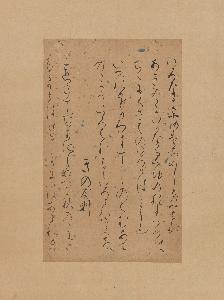Fujiwara No Sadayori
藤原定頼;Fujiwara No Sadayori
Place: Kyoto
Death: 1045
Biography:
Early Life and Career
Fujiwara No Sadayori served as director for military affairs before becoming middle councilor. His poetic talents were widely recognized, and he was well known for his skills as both a poet and a calligrapher. Forty-five of his poems were included in imperial anthologies, and he was listed as one of the Thirty-six Poetry Immortals. Artistic Style and Contributions
Fujiwara No Sadayori's poetry style was characterized by its simplicity and elegance. His use of natural imagery and themes reflected his connection to traditional Japanese art forms. As a calligrapher, he was known for his beautiful and precise script. Notable Works Some notable works by Fujiwara No Sadayori include the poem asaborake, which was included in Fujiwara no Teika's Ogura Hyakunin Isshu. His poems have been widely studied and admired for their beauty and simplicity. Influence and Legacy
Fujiwara No Sadayori's contributions to Japanese literature and art are still celebrated today. His poetry has been included in various anthologies, including the Shūi Wakashū. As a calligrapher, his work has been admired for its beauty and precision.
Conclusion Fujiwara No Sadayori was a talented poet and calligrapher who made significant contributions to Japanese literature and art. His poetry and calligraphy continue to be admired for their beauty and simplicity, and his legacy can be seen in the many anthologies and artworks that feature his work.


